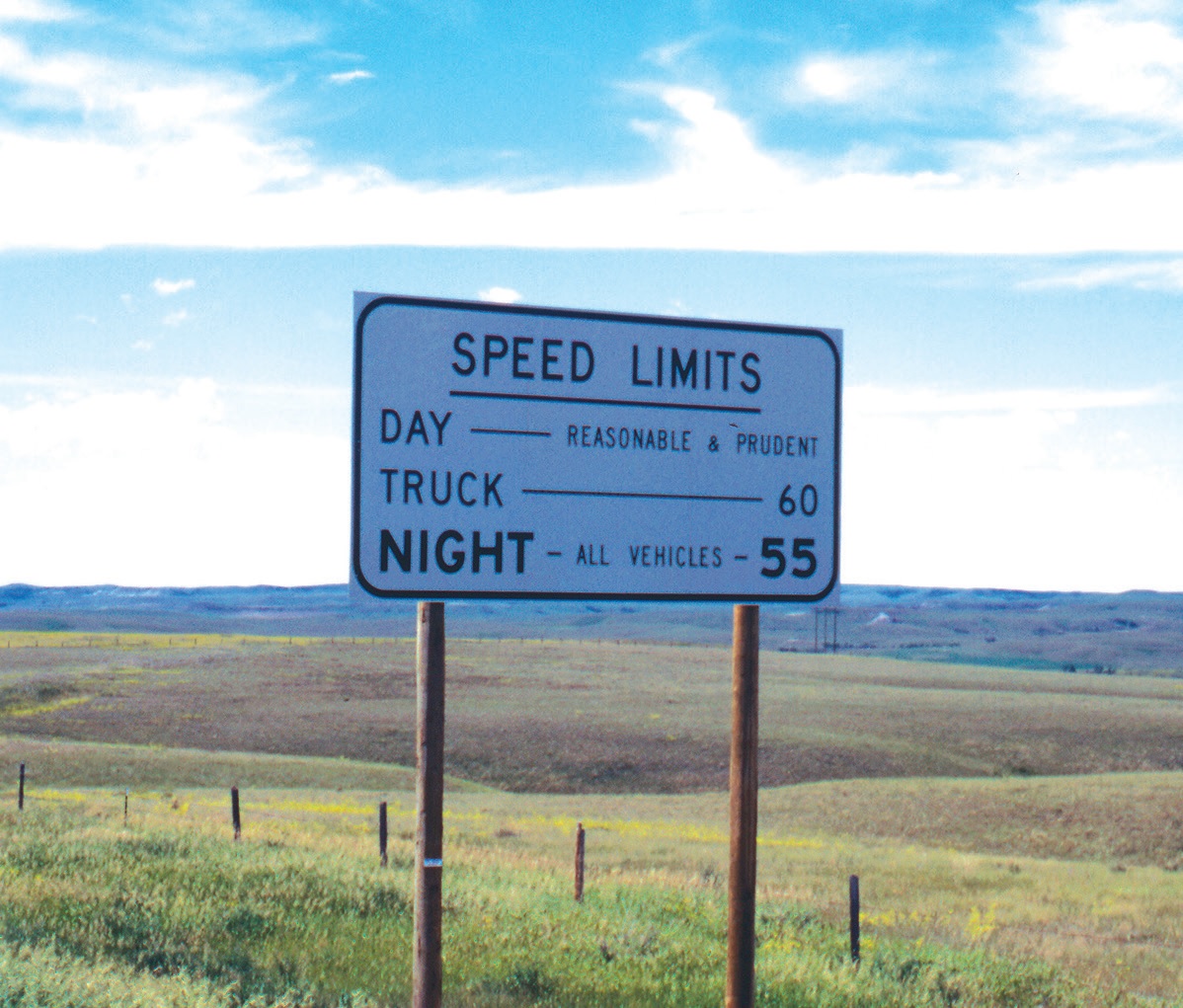Reasonable and Prudent
Evan Zabawski | TLT From the Editor February 2020
Setting a speed limit.

Driving onto a plant site I was taken aback when I noticed the posted speed limit sign stated 29 mph. When I met with my host, I remarked how unusual the sign was and asked for the rationale. What he answered made perfect sense, but I have often wondered how other unique speed limits are set.
In 1955 Montana set a non-numerical daytime speed limit called Reasonable & Prudent and a nighttime speed limit of 55 mph for two-lane roads, 65 mph for interstate highways. This disappeared for a little more than 20 years—a time period famously protested in Sammy Hagar’s hit song I Can’t Drive 55.
In 1974 President Nixon signed the Emergency Highway Energy Conservation Act in response to the 1973 oil crisis. A provision of this act was the National Maximum Speed Law that prohibited speed limits in excess of 55 mph nationwide. The hope was gasoline consumption would decrease by 2.2%. A similar attempt had been made during the Second World War when the Victory Speed Limit was set at 35 mph to conserve gasoline and rubber for the war effort.
Nixon had initially proposed 50 mph for passenger vehicles and 55 mph for trucks and buses, based on the belief these speeds represented maximum efficiency, but the California Trucking Association opposed differential speed limits because of safety concerns.
Nixon ensured compliance by making the 55-mph limit adoption a condition for each individual state to receive federal funding for highway repairs. Two months after the law went into effect the Senate defeated Sen. Bob Dole’s proposal to raise the limit to 60 mph, and the law was made permanent by President Ford at the beginning of 1975.
Ten years later Sammy Hagar was driving through New York on an empty four-lane highway at 2 a.m. when he was stopped for driving 62 mph. He was told, “We give tickets around here for over 60,” to which he replied, “I can’t drive 55.” He then took pen and paper to write lyrics while the ticket was being written, and once he arrived at his house, he worked out the guitar set up.
The big question about the 55-mph speed limit was whether it reduced gasoline consumption. The answer was estimated as “surprisingly small” by professor Glenn C. Blomquist of the University of Kentucky in his 1984 paper. He concluded that only about 0.04%-0.24% of the reduction in gasoline consumption could be attributed to the speed limit during its first two years. Though consumption fell 1.64% the first year and 1.35% the second year, much of it was predictable based on gasoline price and availability.
By 1987 Congress allowed the speed limit to increase to 65 mph for rural interstate highways, but it would not be until 1995 when President Clinton signed the National Highway System Designation Act of 1995 that the 55-mph speed limit was repealed on all roads and the federal funding penalty removed. Accordingly, Montana reinstated its Reasonable & Prudent daytime limit immediately, though it was short lived. In 1999 new legislation set the daytime limit at 75 mph, and in 2015 it was updated to 80 mph, day or night.
Each state now sets its own limits, with five states peaking at 65 mph, 22 states at 70 mph, 12 at 75 mph and four are at least 80 mph. Traces of the old 55-mph speed limit are found in Alaska and the District of Columbia, the only areas opting not to change, and on the speedometers of vehicles built around this time frame (55 was either red, circled or bolded compared to the other values). Speed limits are now set to promote safety since it is a given that speed increases crash probability and severity, but several other factors like seatbelt usage, driver age and experience and drug or alcohol influence affect traffic safety.
Why then was the speed limit at the plant 29 mph and not 30 mph? A single mile per hour speed difference has little effect on my safety if I crashed. My host’s answer was that the odd number made me take notice and adhere to the limit diligently, while a 30-mph sign would not have had the same effect.
Evan Zabawski, CLS, is the senior technical advisor for TestOil in Calgary, Alberta, Canada. You can reach him at ezabawski@testoil.com.